“Anyone who views something under a microscope or through a telescope will tell you that science is art, and that art is the perfect way to convey science,” said Amanda Kwieraga, MS, an alumna of the Master of Science in Stem Cell Biology and Regenerative Medicine program at the Keck School of Medicine of USC. Using acrylic and ink on wood panels, Kwieraga is creating “Art for Science’s Sake,” a series of paintings to convey concepts related to stem cell biology and regenerative medicine.
Kwieraga has always been a chimera: part scientist, part artist. In 2015, she earned dual bachelor’s degrees in biology and studio art from the University of Richmond in Virginia. While at USC, she worked in the laboratory of Matthew Michael, PhD, associate professor of biological sciences in the USC Dornsife College of Letters, Arts and Sciences, studying the development of sperm and eggs in the worm C. elegans (roundworm). She also began writing a science fiction novel, sold acrylic paintings and other artwork on Etsy, and embarked on “Art for Science’s Sake.” As a new USC graduate, she was recently hired as a research assistant at BioLegend, a biomedical company in San Diego.
“Science is more than fat textbooks, complicated papers, and white-haired men in lab coats,” Kwieraga said. “Science is beautiful. Science is art.”
— Cristy Lytal

This painting captures the motor neurons that transmit electrical impulses from the spinal cord to the muscles, facilitating movement. USC Stem Cell researcher Justin Ichida, PhD, assistant professor of stem cell biology and regenerative medicine at the Keck School, is using stem cells to generate patient-specific motor neurons, which can be used to test therapeutic drugs to treat neurodegenerative diseases, such as amyotrophic lateral sclerosis (ALS).
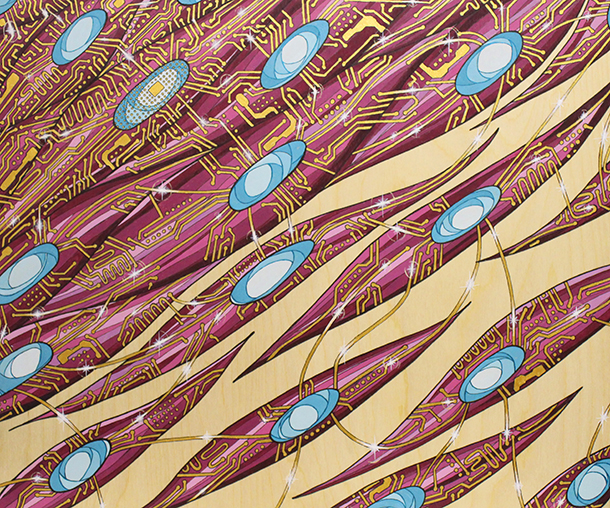
Using another version of SynNotch, Morsut is engineering stem cells to come together and function as a collective unit to differentiate and develop into synthetic muscle with blood vessels.
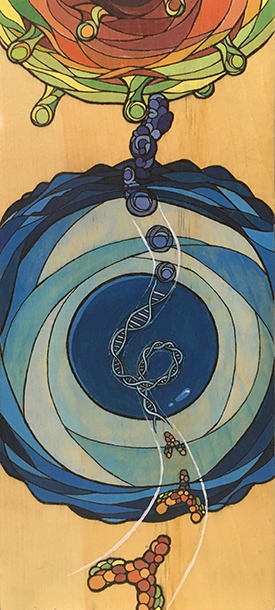
USC Stem Cell researcher Leonardo Morsut, PhD, assistant professor of stem cell biology and regenerative medicine at the Keck School, has built a synthetic cellular communication system known as “synNotch.” In one version of synNotch, Morsut engineered a synthetic cell surface receptor that enables an immune cell, called a T cell, to recognize a tumor, and respond with an attack.
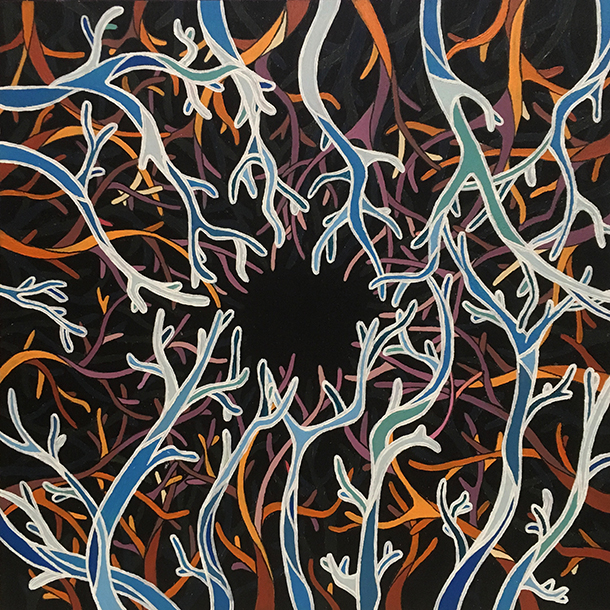
Current methods for diagnosing diabetic retinopathy, a leading cause of blindness in the U.S., are invasive, time-consuming and inconvenient. At USC’s Translational Imaging Center, Scott Fraser, PhD, Provost Professor of Biological Sciences and Biological Engineering, and director of science initiatives; and former member Jeff Fingler, PhD, pioneered a cutting-edge technique to create images of blood vessels throughout the living retina, and the Alfred E. Mann Institute for Biomedical Engineering helped them make this clinical device a reality — enabling quick, noninvasive and earlier detection of diabetic retinopathy.
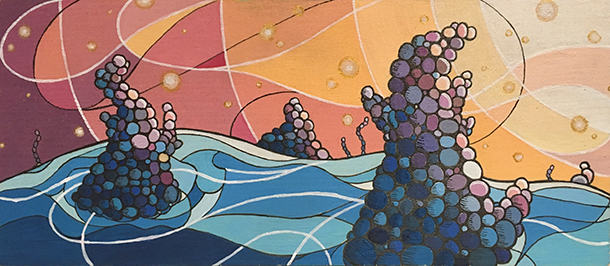
This painting depicts a close-up look at the surface, or membrane, of a cell. Embedded in the surface are receptors, or proteins that receive the molecular signals, such as hormones, neurotransmitters and nutrients, that allow for cell-cell communication.
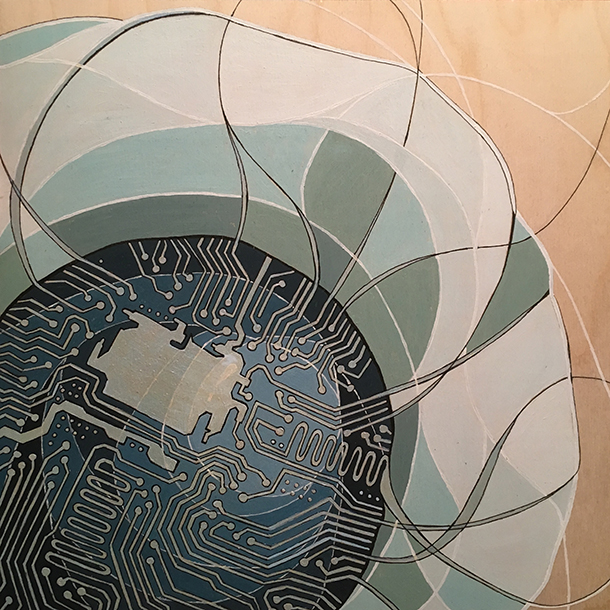
SynNotch is one example of how a “synthetic biology” approach can be used to control cellular behaviors, such as gene activity, tissue repair and differentiation. “Cells are robots,” said Morsut, whose goal is to hack the system and direct cells to heal the body.
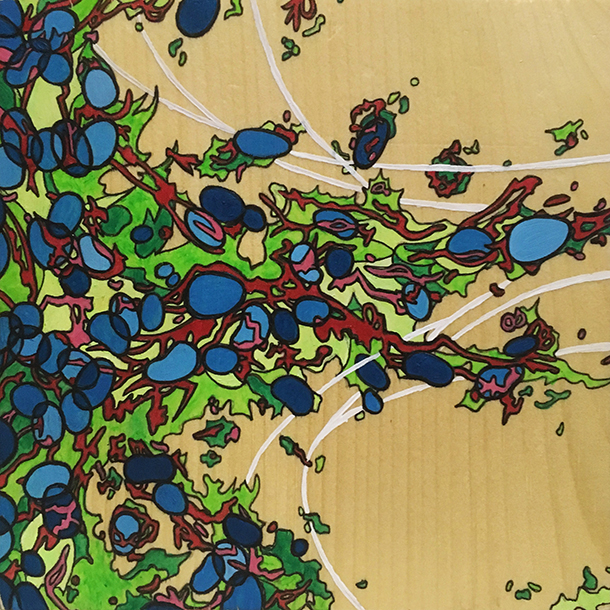
The leading cause of cancer-related death, metastasis is the spread of malignant cells through the blood or lymph system to form new tumors in distant organs. USC Stem Cell researcher Min Yu, MD, PhD, assistant professor of stem cell biology and regenerative medicine at the Keck School, is exploring how and why certain cells metastasize, and exploring personalized treatments for patients with breast cancer.


